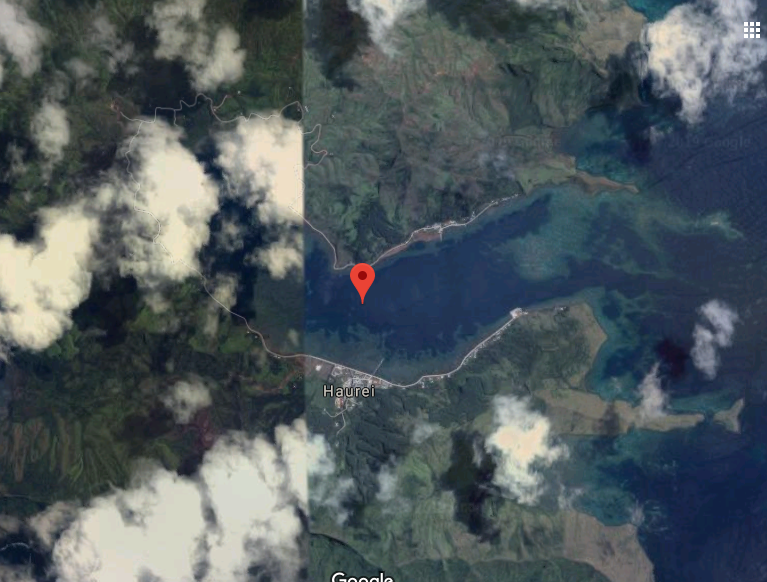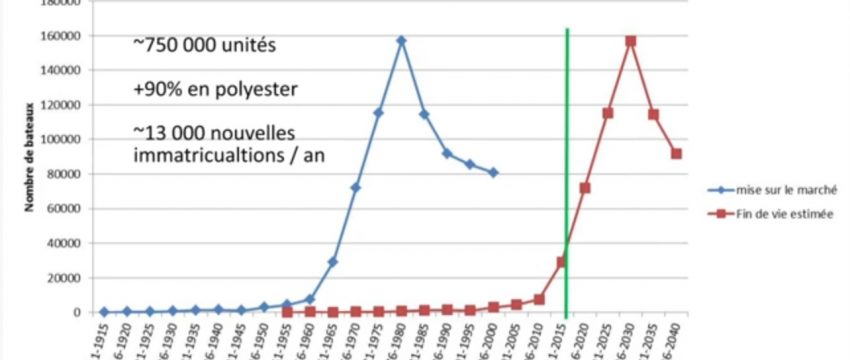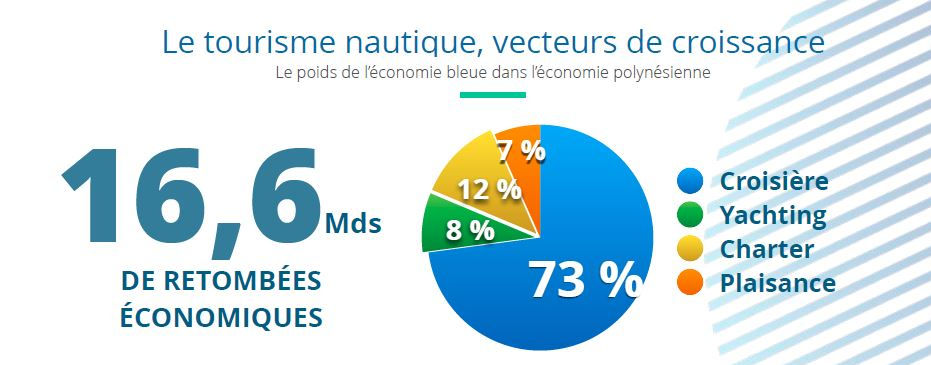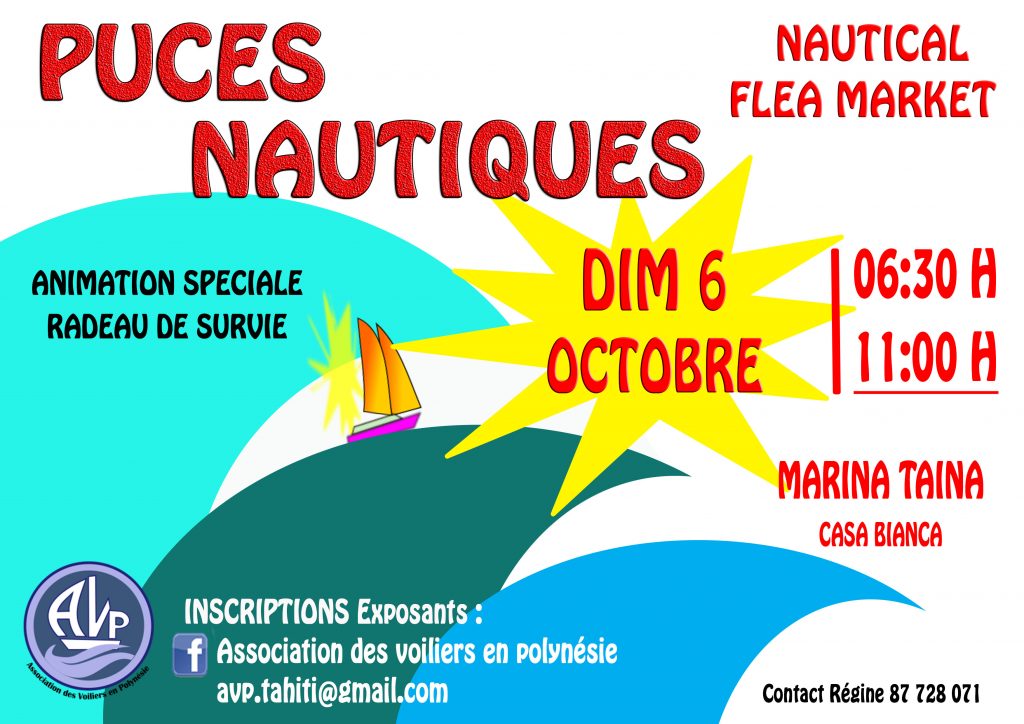Florent Gachod, AVP Secretary - November 2019
90% of boat hulls are made of polyester, production began in the 1970s, intensifying until the 1980s, and the life of a composite boat is estimated at 40 years: recycling is now, here we are!
There is an urgent need to create a chain for these boats, it already exists in France, it remains to be created in Polynesia, this will allow to clean up abandoned boats, to free up space in marina for the benefit of other boaters and to give a positive image of our boating. Everybody's going to win!
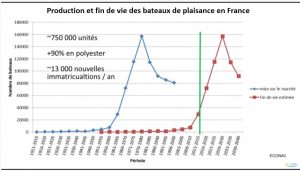
1. Abandoning a boat:
But why are you abandoning his ship? There are as many reasons as there are stories of boats! But these are often reasons::
- Financial
- Family
- Medical
- Lack of time
- Loss of interest
"Sometimes it's easier for a boater to abandon your ship than to take care of it..."
The owner is responsible for his boat, its abandonment may be subject to criminal prosecution
It is necessary to anticipate this abandonment and accompany the boater in a voluntary approach.
2. The voluntary approach:
'Abandoning' is sometimes the last chance solution, we have to frame the endofs of the life of the boats, we must make the administrative procedures of recycling accessible and all for free! This has already been the case in France since 1 January 2019 (Article L541-10-10) - the boater's only constraint is to take his boat to an approved deconstruction centre.
The voluntary approach is the solution because it helps to accompany the boater in the deconstruction of his ship, it allows above all to greatly limit the risk of abandonment.
3. How to legally evacuate an abandoned boat?
Just like a car a boat is privately owned. It cannot be moved, modified or destroyed without the owner's express permission, but there is an administrative procedure for the retirement of the wrecks. In France property rights are relatively well protected, so this procedure must be well respected, it can be summed up in this:
- The port authority must make an assessment of the abandonment or obstruction
- It sends the owner a notice to the owner to stop the abandonment or obstruction within 1 to 3 months (with advertising)
- In case of non-response of the owner, the port authority asks the prefect of department to pronounce the forfeiture of ownership. The prefect must decide within 2 months
- If the prefect pronounces forfeiture, the port authority must wait 2 months before proceed with the sale of the ship (need to advertise the forfeiture)
In theory this procedure can last 4 to 7 months but in practice it will certainly take longer. Ref. :
Some ports use a different simplified procedure that allows these boats to be removed more quickly:
- Step 1: Sending a warning letter to the owner
- Step 2: If there is no response, send a letter of formal notice
- Step 3: If there is no answer, the port will put the boat ashore, at the owner's expense and at its own risk.
- Step 4: After one year and one day there is loss of ownership and the boat can be deconstructed.
4. The steps of deconstructing a pleasure boat:
Example of a 9-step deconstruction:
- 1. AUDIT: Environmental diagnostics including a study of the storage site and the boat
- 2. The DESANDOFING of the boat, which is carried out at the Maritime Affairs Office, and then its RADIATION of the francization register to be carried out with Customs.
- 3. TRANSPORT: transfer of the boat to the deconstruction centre
- 4. DISARMAMENT: removal of navigational equipment and equipment
- 5. DEPOLLUTION: recovery of different fluids (hydrocarbons, oil), batteries, ...
- 6. ELIMINATION OF DANGEREUX WASTE: treatment in specific facilities with storage or incineration
- 7. SELECTIVE DECONSTRUCTION: deconstruction of the different elements of the boat
- 8. THE SHREDRING and grinding of the hull and deck, it is the sorting of waste and sending to the appropriate channels
- 9. THE VALORISATION OF THE WASTE: in the channels adapted with traceability.
more about https://www.recyclermonbateau.fr/
5. Different ways to recycle a boat:
Recycling a boat is complex, it must be supervised and organized to limit the impact on the environment:
- Crushing and burial: it's the most common and the easiest solution to put in place
- Incineration:
- Brute (so without material optimization)
- In the form of CSR (Solid Repair Fuel), it is a set of non-recoverable waste in the form of pellets that will be used to power cement plants (for example), a very good alternative to fossil energy!
- Valuation: re-use of the material, fiber/resin is integrated to the tune of 40% in fairly diverse products (e.g. the base of fences)
- Steel or aluminum boats will be easily valued
- Laminated plywood boats, varnishes, glues, ... difficult to recycle, incineration is often the only solution.
- Reuse: giving a second life to an object/material
6. Organize by creating a sector:
In Polynesia, a recycling network must be created to effectively manage the end-of-life of pleasure boats. This network should bring together all the players who can help with the deconstruction, from the retirement to the final recycling of the ship: administration, marina, shipyard, user association, processing center, etc.
In practical terms, this could be summed up as:
- DPAM and Customs
- The Autonomous Port
- The associations: the Maritime Cluster, the AVP, the FEPSM,
- Marinas: Taina, Papeete, YCT, Vaiare, Taravao, Apooiti,
- Construction sites: Technimarine, TNC, Raiatea Carénage, CNISLV, MMS, Apataki Carénage
- Underwater work companies (refloating and recovery)
- The crane, the transport
- Treatment centres: Fenua Ma, Technival and Enviropol
- The CET (Technical Burial Centre) in Paihoro
- Motu Uta's CRT (Recycling and Transfer Centre)
- ...
The entire network will be managed by an eco-organism that will structure and coordinate the entire sector. It will aim to:
- Raising awareness and informing boaters
- Accompanying shipyards and ports in administrative proceedings
- Ensure payment of deconstruction from partners
- Reducing deconstruction costs by offering partnerships and globalizing actions
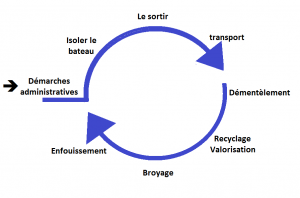
7. What funding for recycling?
The cost of a complete recycling of a ship is expensive, in France it takes an average of 200 euros per meter (on-site delivery not included), but some companies manage to significantly reduce the bill by valuing and re-using Materials.
In France, the financing of boat recycling is done on several levels:
- requesting an eco-contribution to manufacturers in the nautical sector
- State endowment
- Navigation tax (DAFN), from 2% to the 5% ceiling in 2022
In Polynesia we have to adapt the funding to our fenua:
- Entry tax on Polynesian navigation zone
- State endowment
- Private grants
It is therefore imperative to organise a recycling of boats with waste recovery of all kinds to reduce the costs of deconstructing pleasure vessels. This sector will also be used for other types of waste, household and especially industrial.
The stakes are high, the task is colossal! but we must act now because it is the future of our fenua that is at stake.
THE RECYCLAGE IS THE AFFAIRE OF ALL
Let us protect our fenua for ourselves and for future generations.
